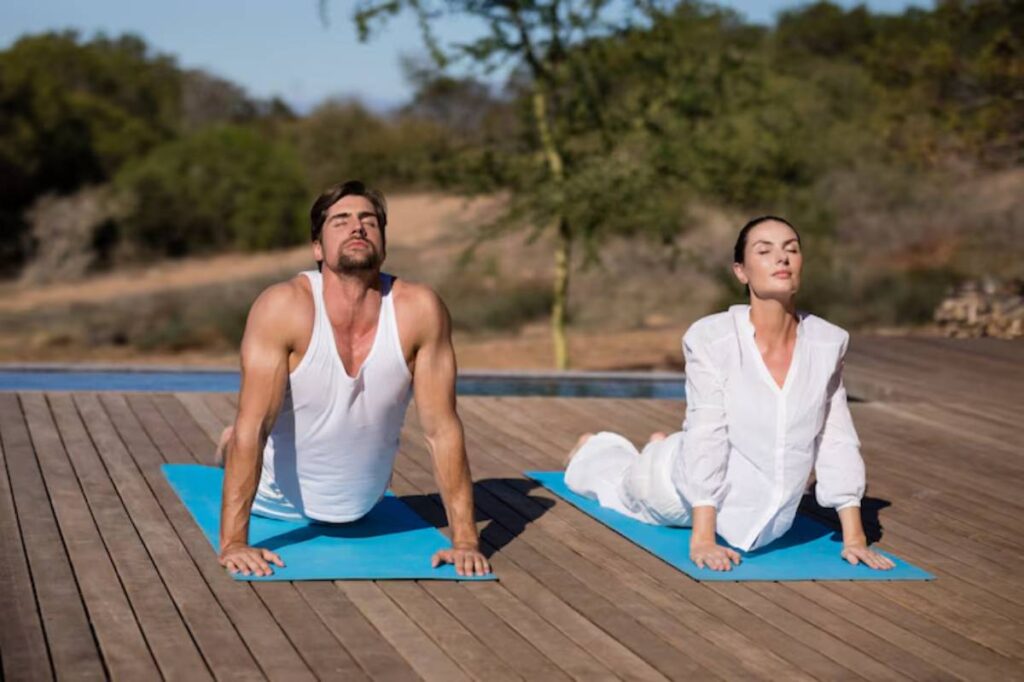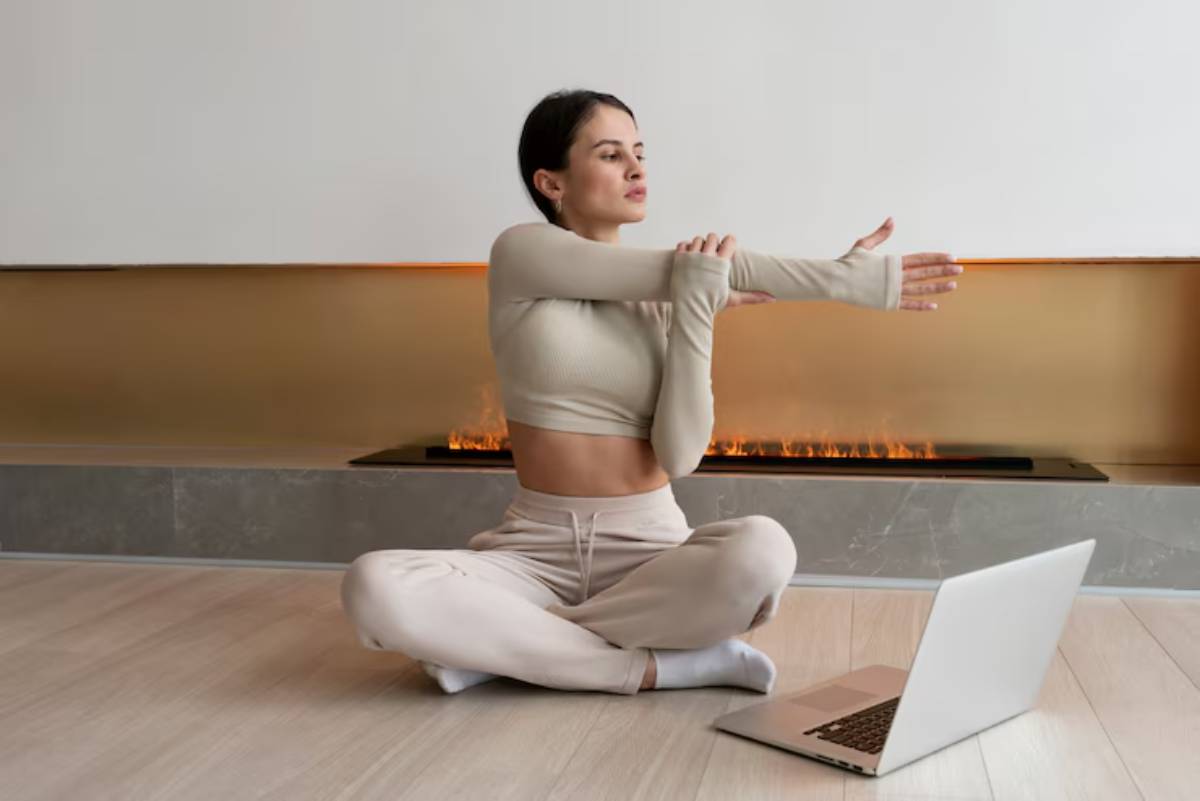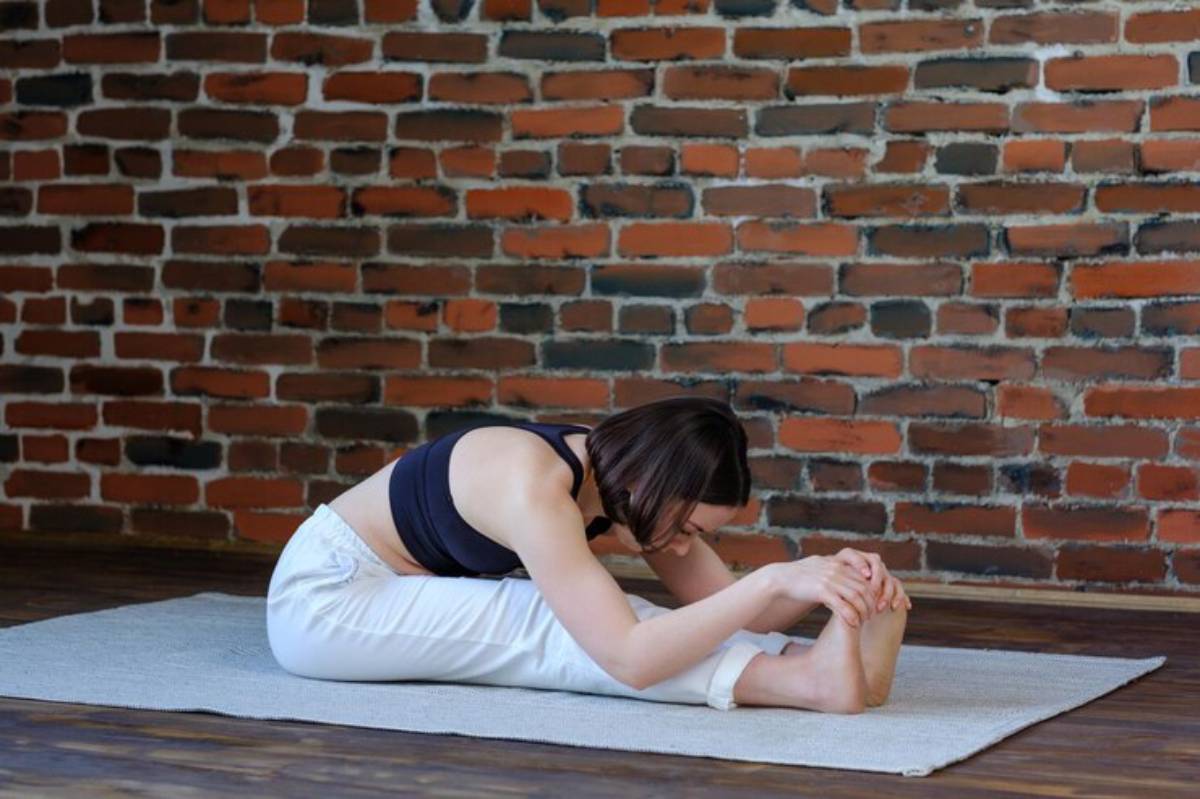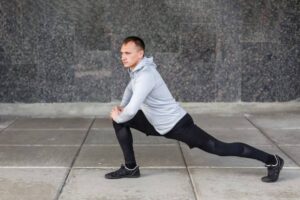The Fitness Blog

Pairing Breathwork With Stretching for Faster Recovery
We often think of recovery as something that just happens once the workout is over. You sweat, stretch for a few minutes (maybe), and then move on. But real recovery—the kind that reduces soreness, restores flexibility, and leaves you mentally clear—requires a little more intention.
Enter the pairing of breathwork and stretching.
This combination is simple, equipment-free, and surprisingly powerful. When done correctly, it taps into your body’s natural healing systems, allowing you to reduce muscular tension, boost mobility, and access a deeper state of post-workout calm.
In this article, we’ll explain how integrating breathwork stretching into your routine helps speed up recovery and why it works so well, both physiologically and mentally. After your next session, you’ll walk away with techniques that are easy to apply and evidence to back their impact.
Why Combine Breathing and Stretching?
Activating the Parasympathetic Nervous System
Your body has two nervous system modes: sympathetic (fight or flight) and parasympathetic (rest and recover). Most intense workouts keep you in sympathetic mode—with increased heart rate, tight muscles, and heightened alertness.
Breath-led stretching flips that switch.
When you slow your breath, particularly your exhale, you trigger parasympathetic activity. This slows your heart rate, calms the mind, and encourages muscles to let go rather than remain on high alert. It’s what makes yoga recovery breathing such an effective practice.

Breathwork Enhances Stretching Outcomes
You may think you’re stretching well, but if you’re breathing erratically or holding your breath, your muscles are resisting you. Instead, synchronising deep, controlled breathing with each stretch:
- Reduces muscle guarding reflexes
- Enhances oxygen delivery to soft tissues
- Calms the nervous system (decreasing pain sensitivity)
- Improves your tolerance to the stretch
This is why yoga and mobility specialists often cue breathing alongside movement—because it works.
The Science Behind It
A 2020 study published in The Journal of Bodywork and Movement Therapies found that participants who combined diaphragmatic breathing with static stretching experienced:
- Greater reductions in muscle stiffness
- Increased range of motion
- Lower post-exercise cortisol levels
Another study in Frontiers in Human Neuroscience revealed that controlled breathing activates brain regions linked with emotional regulation and physical relaxation, exactly what’s needed after intense exercise.
Best Breath Techniques to Pair With Stretching
Here are three breathing techniques that pair beautifully with post-workout mobility work:
1. Diaphragmatic (Belly) Breathing
- What it does: Encourages relaxation and enhances oxygen flow
- How to do it: Inhale deeply through your nose, expanding the belly, not the chest. Exhale slowly through your mouth.
2. 4-6 Breathing
- What it does: Lengthens the exhale, improving vagal tone and muscle release
- How to do it: Inhale for 4 seconds, exhale for 6. Repeat for 5–10 rounds during each stretch.
3. Box Breathing
- What it does: Balances your nervous system and improves focus
- How to do it: Inhale for 4s, hold for 4s, exhale for 4s, hold for 4s.
These can be used solo or within a cooldown sequence. For a deeper dive, check out box breathing for post-workout relaxation.
Stretching + Breath: Sample Recovery Pairings
Pairing your breath with stretching movements doesn’t require an elaborate yoga session.
Here are practical combinations you can use:

Seated Forward Fold + 4-6 Breathing
- Inhale to lengthen the spine
- Exhale and gently fold forward
- Let each exhale melt you deeper
- Ideal for hamstrings and lower back
Child’s Pose + Diaphragmatic Breathing
- Relax your belly against your thighs
- Breathe into your lower back
- Great for spinal decompression and hip release
Supine Twist + Box Breathing
- Inhale, then twist gently on the exhale
- Maintain the twist while breathing through tension
- Perfect for the thoracic spine and digestive reset
Timing: When to Practise Breath-Led Stretching
After Workouts
While your muscles are warm and pliable, use breath to enhance stretch gains and promote relaxation.
On Recovery Days
Create a short breath-stretch flow to maintain flexibility and nervous system balance.
Before Sleep
A short breathing + stretching session is a powerful tool for reducing cortisol and preparing your body for rest.
This practice is especially helpful after evening training, when the body might still be in sympathetic drive at bedtime. If you’re curious about other strategies, you can also explore diaphragmatic breathing for nervous system reset.
Integrating It Into Your Weekly Recovery Routine
You don’t need 30 minutes or a yoga teacher. Here’s how to make breath-stretch pairing a habit:
- Set a timer: Just 5–10 minutes post-workout is enough.
- Pick 2–4 target areas: Think hips, hamstrings, shoulders, or spine.
- Use breathing to pace each stretch: Inhale to prepare, exhale to ease in.
- Finish in a calming pose: Try legs-up-the-wall or reclined butterfly to close your session.
Repeat 2–3 times a week or more if you’re highly active.
Real-World Recovery Flow (No Mat Required)
Let’s say you’ve just finished a heavy leg session. Try this:
- Seated hamstring stretch (4-6 breathing) – 2 minutes per leg
- Butterfly stretch (diaphragmatic breathing) – 2 minutes
- Reclined twist (box breathing) – 1 minute per side
- Legs-up-the-wall (diaphragmatic breathing) – 3 minutes
In 10 minutes, you’ll have mobilised your hips, calmed your nervous system, and set your body up for recovery.
Common Mistakes to Avoid
Even though it sounds simple, a few missteps can blunt the benefits:
- Holding your breath during a stretch: This creates tension rather than release.
- Stretching too aggressively: If you’re pushing through pain, your body will resist. Let breath, not force, guide depth.
- Ignoring posture: Breathe with aligned form. Rounded backs and collapsed chests reduce oxygen flow.
- Multitasking: This isn’t the time for music, texts, or TV. Presence matters.
Who Benefits Most from This Practice?
Breath-stretch recovery isn’t just for yogis.
It’s especially useful if you:
- Lift weights regularly
- Train in high-intensity or endurance sports
- Have mobility limitations
- Experience high stress
- Work a sedentary job with long hours of sitting
It’s also low-impact and joint-friendly, making it ideal for older adults, post-injury athletes, or beginners easing into fitness.
Conclusion: Move Better, Recover Smarter
Recovery isn’t just about what you do—it’s about how intentionally you do it. Pairing breathwork with stretching offers a gentle yet powerful way to help your body reset, recharge, and come back stronger.
This simple practice combines science and intuition: it calms the breath, eases the muscles, and nourishes the nervous system. It’s not complicated, trendy, or profoundly effective.
So next time you unroll your mat—or even just sit down post-training—ask yourself: Can I slow down and breathe deeper? Your flexibility, resilience, and well-being might just depend on it.









